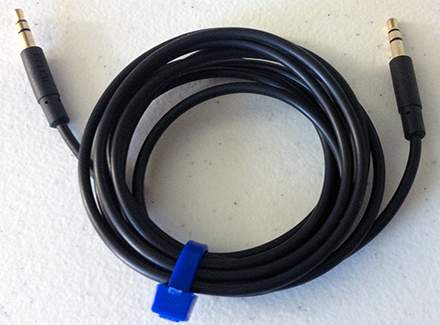
#How to use vga cable from laptop to tv tv
If the picture on your TV looks fuzzy and indistinct then it's probably outputting the wrong resolution.

Problems connecting laptop to TV with HDMI Poor image quality But did you know you can have two entirely different images? This is especially handy when you want to watch something on your big screen but carry on surfing on your smaller laptop screen. When connecting your laptop to a TV, usually you'll see an exact copy of what's on your laptop's screen on your TV. What you'll need: HDMI Cable Extend or duplicate? If your laptop has an HDMI port, you simply need an HDMI cable to connect the two. Practically any TV from the last 10 years will have an HDMI port, and this is the primary way to get video and audio from an external source such as a DVD player or set-top box.
#How to use vga cable from laptop to tv how to
To help you, I'm listing all of the ways that you can achieve your goal (HDMI, VGA and mirroring using a Chromecast), explaining all of the problems that you might face and, most importantly, how to fix them Using HDMI So, the alternative methods could be the best bet. It does mean that your laptop has to sit quite close to the TV and you need the right outputs on your computer and right inputs on your TV. The easiest way is to hook your laptop up via a cable, turning your TV into a giant monitor. So, how do you hook your laptop up in the most convenient way? This shift to digital media has been brilliant, giving us access to everything we could want from our computers, but there's be times when you don't want to look at everything on the small screen of the laptop, but want to view everything on your big-screen TV, particularly if your don't have a smart TV with the latest apps. Likewise, if I asked how you got access to new music and watched TV and films, the answer would most likely be via a streaming service on a computer. On supported TVs, the VGA port is typically labelled as ‘PC IN’.If I asked you where you keep your photos, videos and music, the answer, for most people, would be on the computer. However, VGA cables can only process analogue video signals, so outputting audio requires the use of an additional 3.5mm audio lead – connect this cable from the ‘Headphone Out’ socket of your laptop to the audio port of your TV or external speakers, if using a projector.

For laptops older than four to five years, using VGA cables to connect to a TV or projector might be your only option – older devices are often rarely equipped with High Definition Multimedia Interface functionality, the current standard today. Thanks to their versatility, VGA interfaces are guaranteed to be found on almost any piece of audio/video hardware – this is especially good news if your source device or display monitor was manufactured to serve as a low end, entry level product or budget model of its line. If your desktop monitor utilises a configurable VGA cable, that very same cable can be used by your laptop in order to connect it to a projector or TV. With a 15 pin connector on either end, VGA cables effortlessly plug into VGA ports and are a universal option for the vast array of devices that support them. This includes most desktop computers and laptop computers as well as projectors – some TVs such as LCD and LED TVs also offer VGA cable support. Introduced in 1987, VGA was expressly designed to serve as the industry standard interface: as such, VGA cables are the most common way of connecting between a number of source devices and display monitors. One of the most efficient ways of doing so is through the use of a Video Graphics Array (VGA) cable. There exist a whole host of ways in which to connect a laptop computer to a TV or projector.


 0 kommentar(er)
0 kommentar(er)
